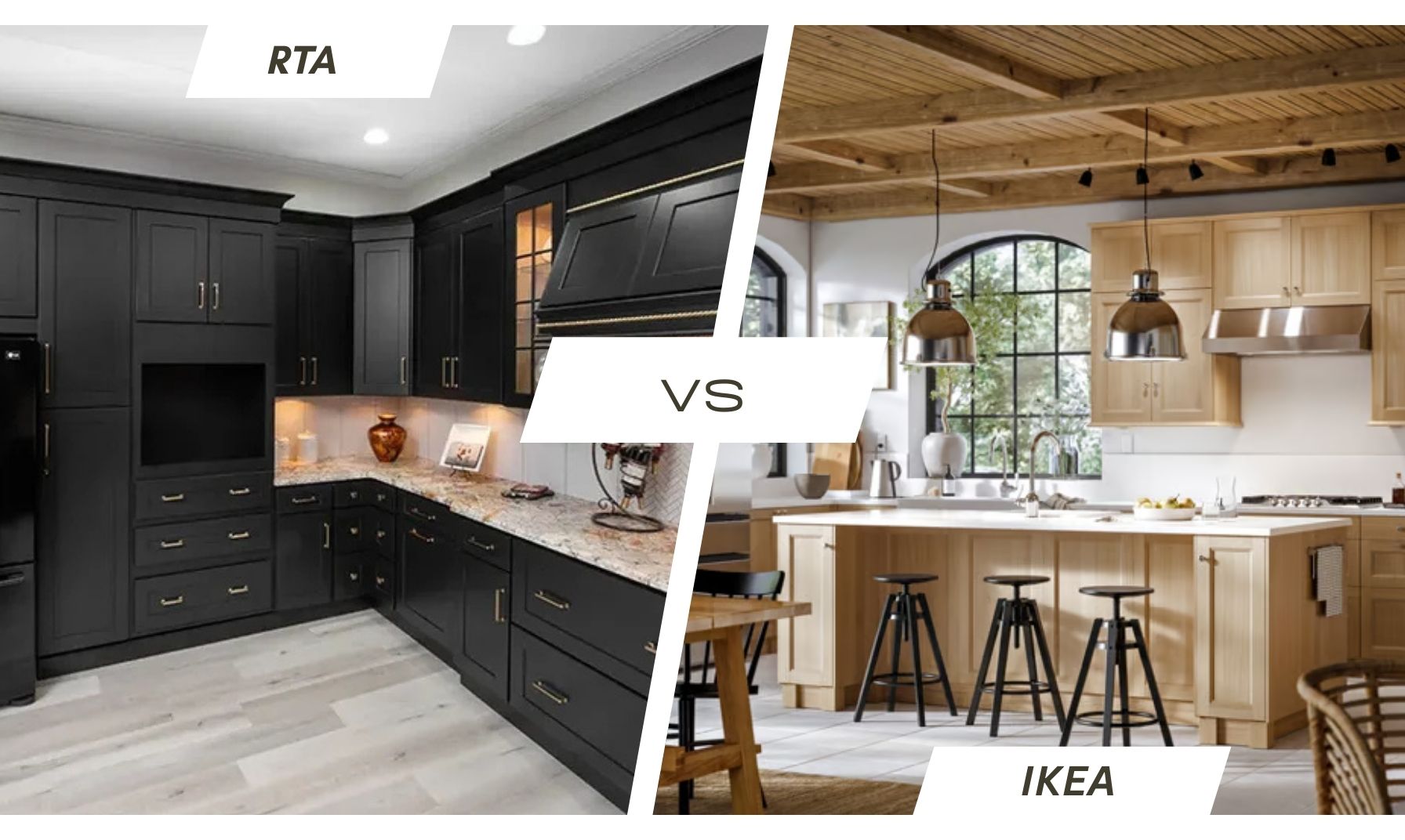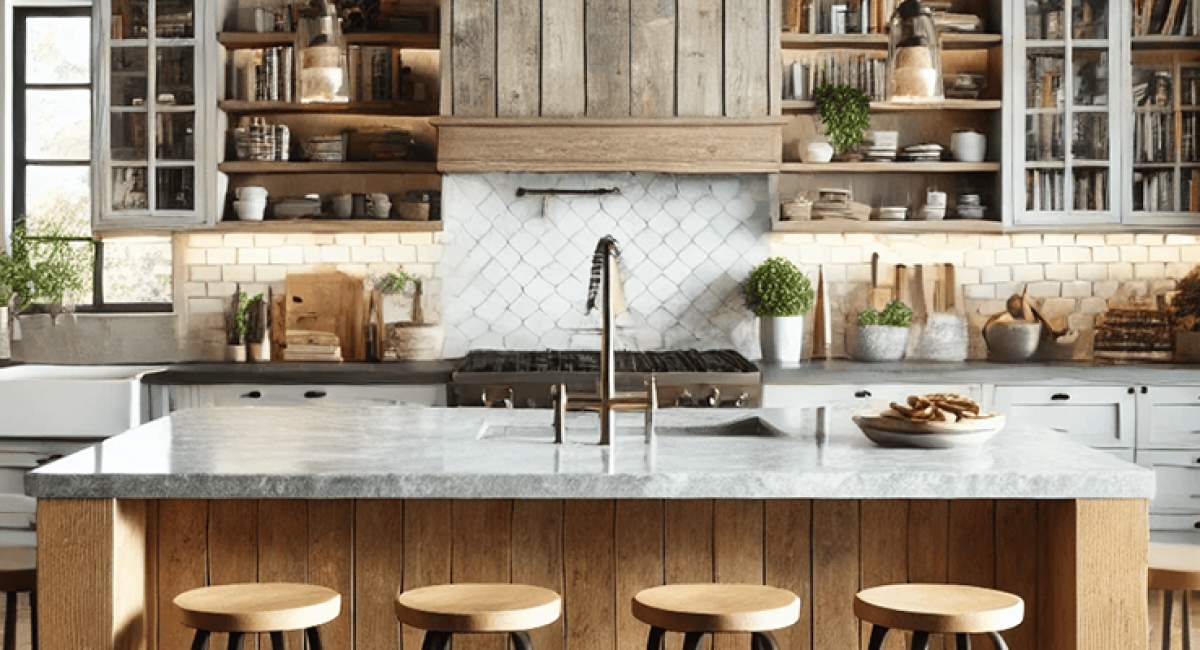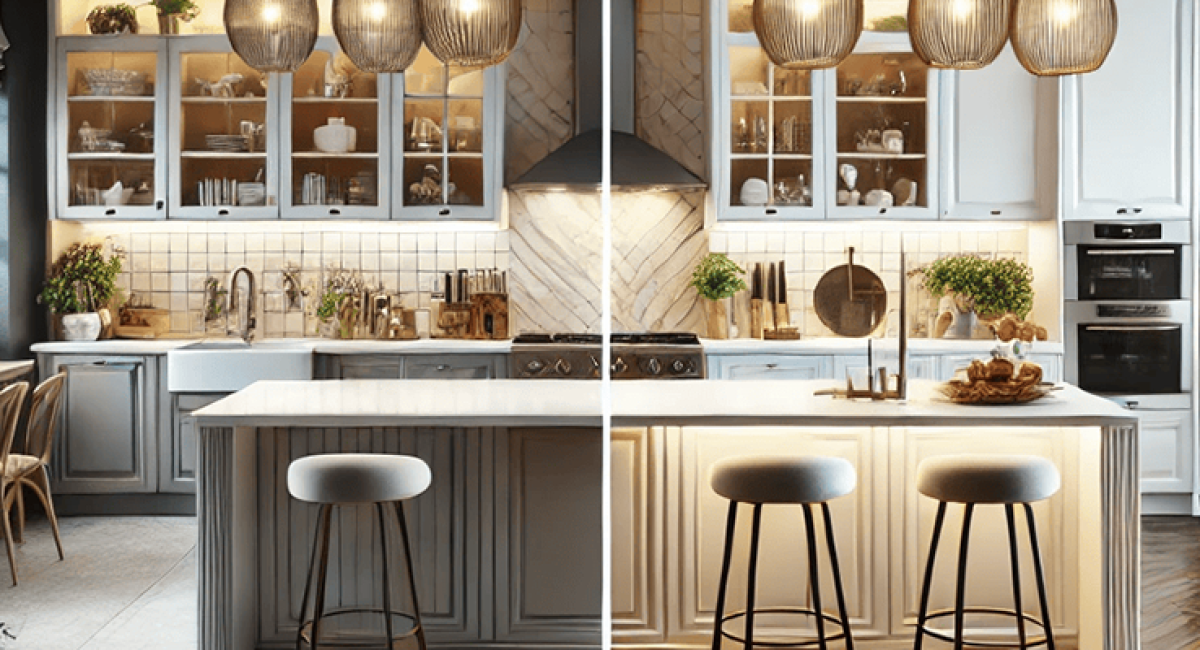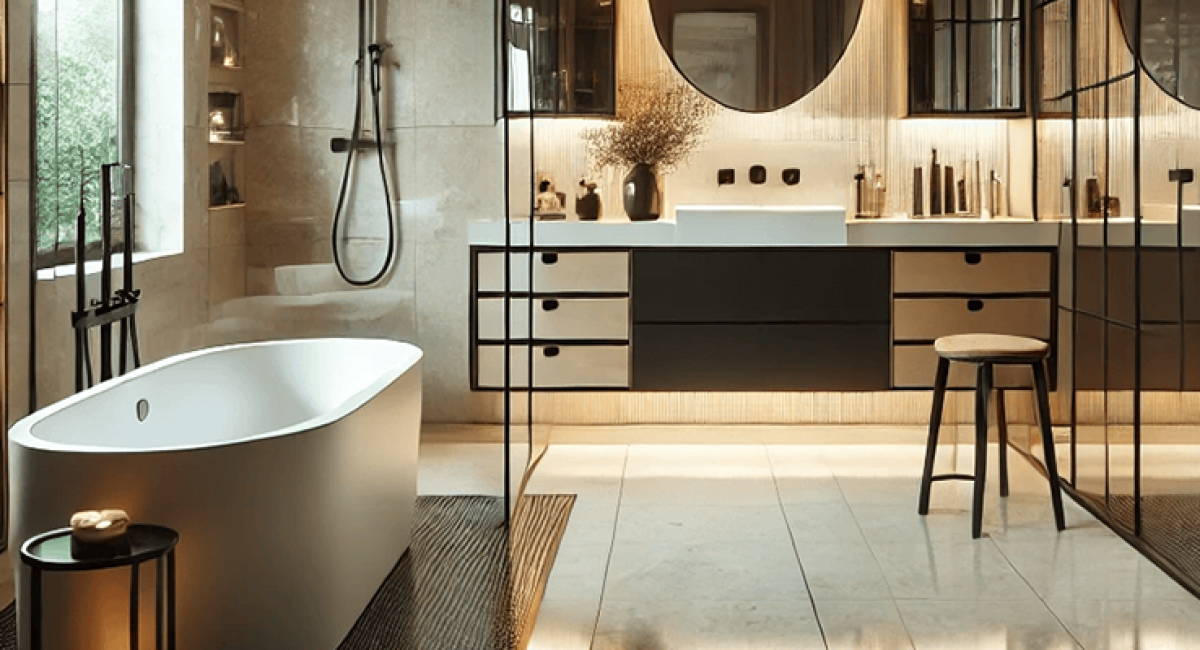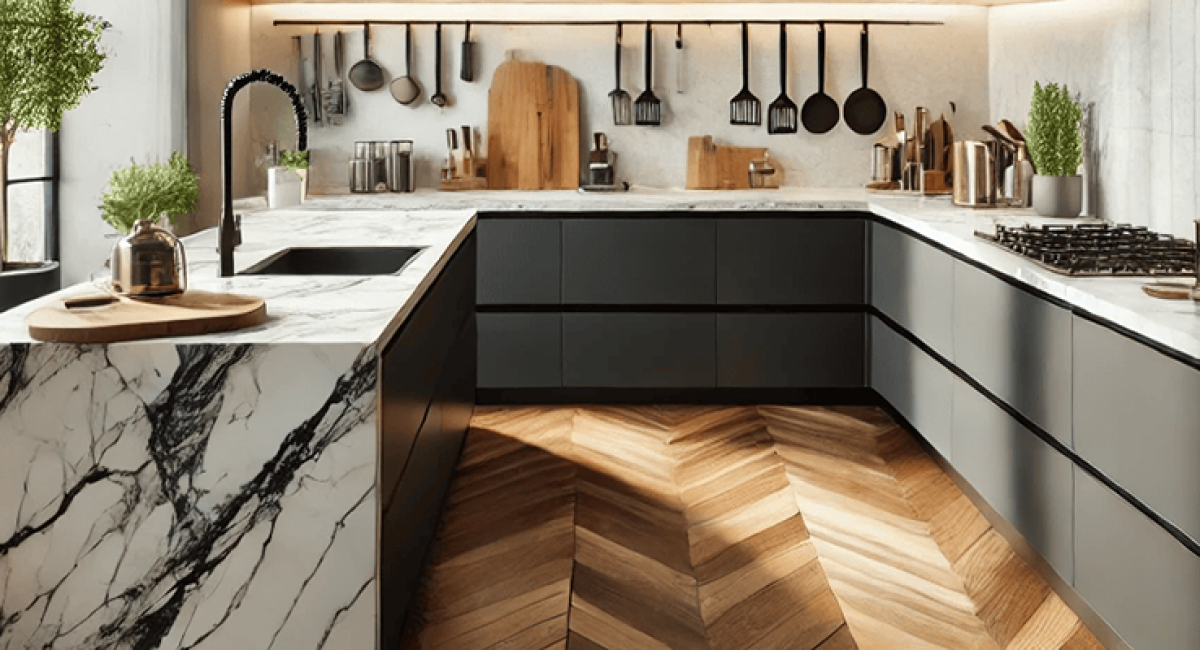Choosing between Ikea vs RTA cabinets can be quite a decision for homeowners and even project managers for remodelling or new construction. We are not saying that one is inferior to another, as both have their best features for targeted clients and customers. One has a solid build, while one may offer design consistency. Considering this, finding the right option can be overwhelming. So, it is better to understand both cabinets so you can make an informed decision. Let’s compare IKEA and RTA cabinets in-depth to gain clarity on durability, materials, style, value, and more.
IKEA vs RTA Cabinets: Side-by-Side Comparison
To get a better look at the RTA or IKEA cabinets, this table will give you a comprehensive look.
| Feature | IKEA Cabinets | RTA Cabinets |
| Material | Particle board / MDF with melamine or laminate. While engineered wood is stable, it can be prone to swelling if exposed to moisture. | Often plywood boxes with solid hardwood doors and frames. Plywood resists warping and handles humidity better, making it a preferred choice among many contractors. |
| Design | Euro-style, frameless, modern, and modular. Known for clean lines and contemporary finishes like gloss white or matte neutrals. | A wide range: Shaker, raised-panel, flat-panel, transitional, or traditional designs. Greater adaptability for classic and rustic kitchens. |
| Durability | Better longevity with proper care—many IKEA kitchens last 15–25 years. | Quality varies by brand. Premium RTA lines such as Fabuwood or J&K Cabinetry rival semi-custom cabinets, while low-cost imports may fail within a decade. |
| Warranty | 25 years, industry-leading for budget-friendly cabinets. Includes coverage for hinges, drawers, and structural defects. | Typically 2–5 years, depending on brand. Premium suppliers may extend coverage, but most warranties are limited compared to IKEA. |
| Customization | Limited to available modular sizes. Requires filler panels in irregular spaces. Few finish or door-style options. | Greater flexibility: more sizes, door styles, wood species, and finishes. Some suppliers allow unfinished cabinets for custom staining or painting. |
| Support | Strong customer service, accessible in-store help, and readily available replacement parts. | Support depends on the supplier. Trusted RTA brands offer dealer networks, but smaller importers may lack consistent after-sales service. |
| Brands | Exclusive to IKEA. Designs are updated every few years but remain limited to IKEA’s catalog. | Wide selection of brands such as Fabuwood, J&K Cabinetry, Forevermark, Kitchen Cabinet Distributors (KCD), and more, providing variety in quality and price. |
| Installation | Uses a rail system that simplifies DIY projects. Adjustable legs make levelling cabinets easier for homeowners. | Assembly varies: some use cam-lock systems, others require glue and dovetail joinery. More challenging for beginners but sturdier if done correctly. |
| Price | Affordable mid-range. Cabinet boxes typically cost less than semi-custom cabinetry but more than budget RTA imports. | Broad range: budget-friendly imports to semi-custom lines that approach custom cabinetry pricing. Offers flexibility for both low and mid-range budgets. |
| Environmental Impact | IKEA sources wood under strict sustainability guidelines (FSC-certified) and focuses on eco-friendly finishes. | Many RTA brands now offer CARB2-compliant plywood and low-VOC finishes, but sustainability varies by manufacturer. |
This table will help you understand the differences between IKEA vs RTA Cabinets. We have a breakdown of both IKEA and RTA Kitchen Cabinets.
What Are IKEA Cabinets?
IKEA cabinets are modular, flat-packed systems designed around European frameless construction. These cabinets feature a melamine-coated particleboard construction for boxes, with medium-density fiberboard (MDF) or veneer fronts. IKEA’s SEKTION system is the backbone, offering a grid-based kitchen planning approach that makes it easy to design and adjust layouts.
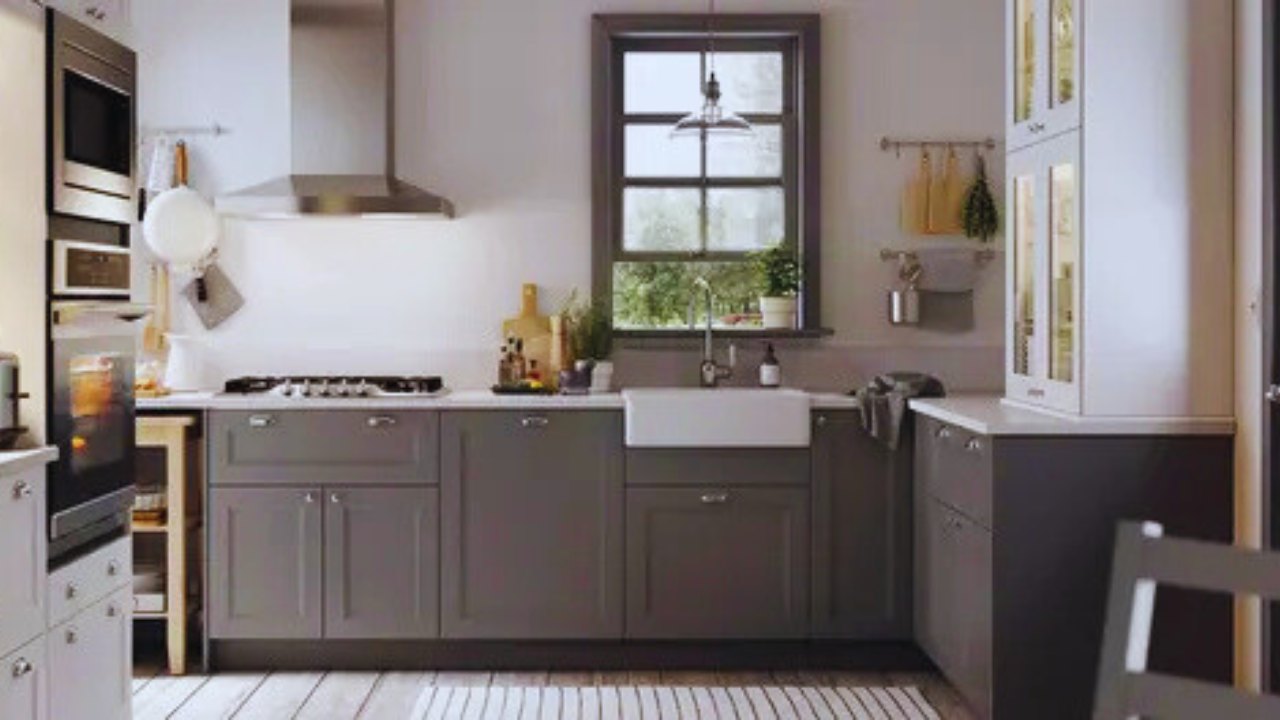
What Are RTA Cabinets?
RTA cabinets, or Ready-To-Assemble cabinets, look like Ikea but are offered by a wide range of manufacturers. RTA cabinets feature an entire category of cabinetry from brands like Fabuwood Cabinetry, J&K Cabinetry, Forevermark, and others. These often feature plywood construction, hardwood frames, and a dovetail drawer closer to semi-custom quality at a lower cost.
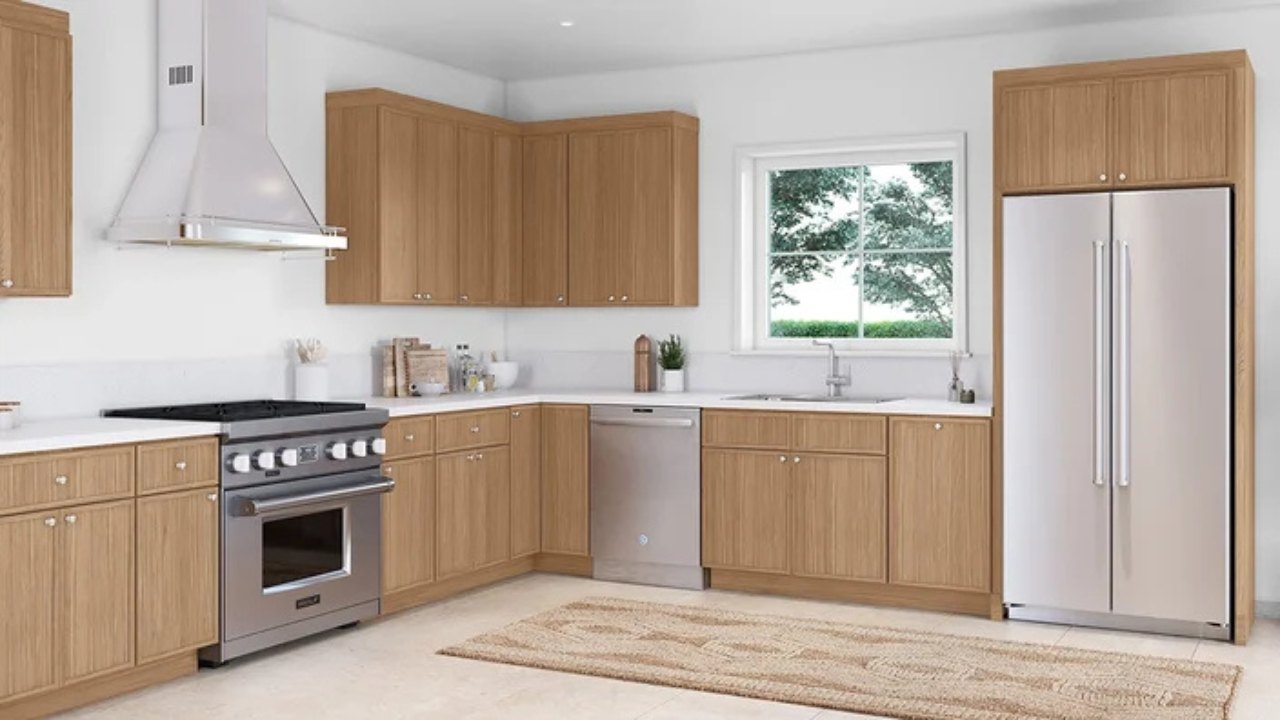
Pros And Cons of IKEA Cabinets
IKEA is a popular choice for many households and businesses. They offer a fair share of advantages and drawbacks, too.
Pros Of Ikea Cabinets
Advantages of IKEA cabinets include:
Affordable entry point:
IKEA cabinets start at the lowest price from the base cabinet to the wall cabinets due to their affordable material build.
Easy to buy:
These cabinets are available at any IKEA store or online. So one can get them anytime when needed.
Consistent modern look:
IKEA kitchen and bathroom cabinets feature minimalist, Scandinavian-inspired design. This is perfect for any modern contemporary spaces.
Large ecosystem:
One can get any accessories, organisers, and hardware that integrate seamlessly with IKEA cabinets.
Strong warranty:
The 25-year limited coverage on cabinet parts is a major advantage for most homeowners
Cons of IKEA Cabinets
Even being a great choice for modern kitchens, these cabinets have some drawbacks as well.
Limited styles:
The styles are mostly suited to modern and contemporary kitchens and not ideal for traditional kitchens.
Particleboard boxes:
Unlike solid hardwood construction, the particleboard is less durable.
Sizing limits:
IKEA cabinets are restricted to catalog dimensions, leading to filler panels in some layouts.
Hardware issues:
Hinges and drawer slides are reliable but not top-tier.
Assembly challenges:
Instructions can be confusing, and doors often require fine adjustments.
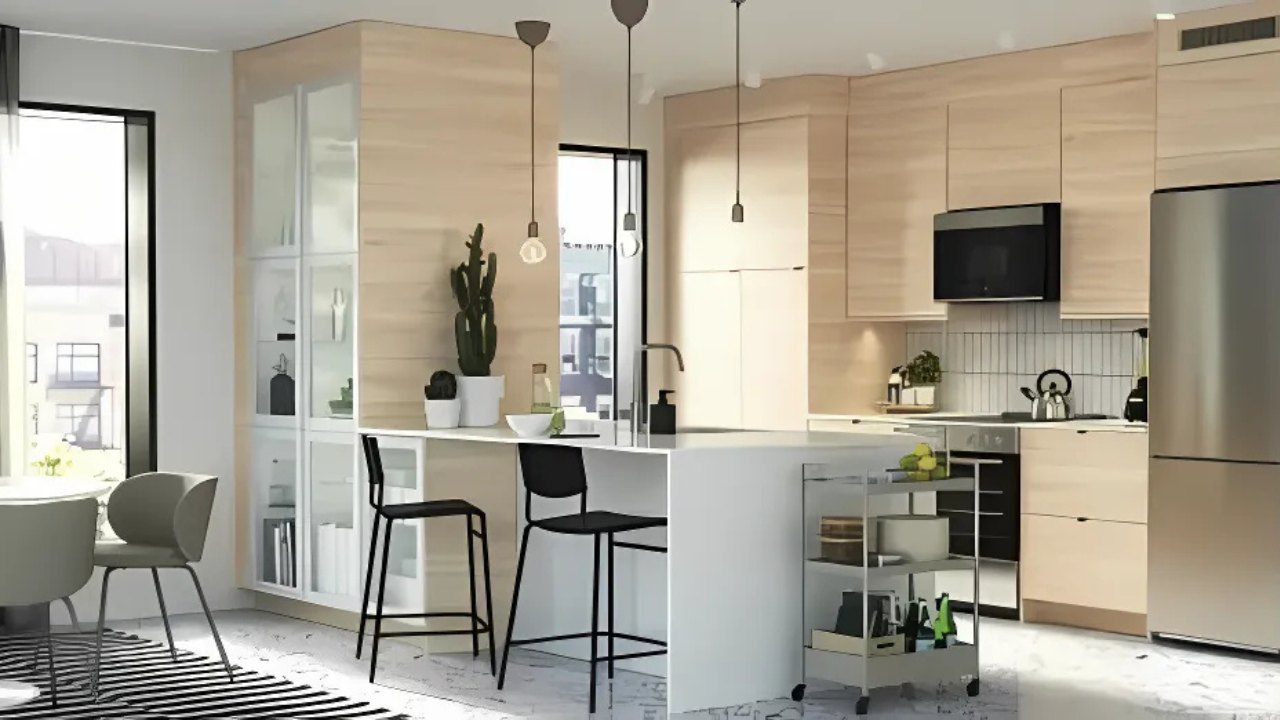
Pros And Cons of RTA Cabinets
RTA cabinets are another popular choice for kitchens and bathrooms. They offer a huge range of benefits, but some drawbacks as well.
Pros Of RTA Cabinets
Advantages of RTA cabinets include:
Material strength:
RTA cabinets feature hardwood face frames and plywood boxes, which offer better durability and longevity.
Variety of designs:
These cabinets feature different styles, including shaker, raised panel, and modern styles are available.
Custom sizing options:
RTA cabinets offer more design flexibility in widths, heights, and finishes.
Durability:
Due to solid build, they can typically last 15–25 years with proper care.
Higher resale value:
RTA cabinets have solid materials that appeal to future buyers.
Brands for every tier:
Different brands offer cabinets for every budget and type, such as Fabuwood for style and strength, J&K Cabinetry for affordability, and Forevermark for balance.
Cons of RTA Cabinets
With so many advantages, these RTA cabinets also have some drawbacks.
Inconsistent quality:
Not all RTA brands are equal, as some brands still use particleboard instead of hardwood.
Longer lead times:
Delivery is not quicker compared to IKEA. Some orders may take 3–6 weeks for delivery.
Complex assembly:
While DIY assembly is possible, most durable builds can be harder to put together for many homeowners.
Higher upfront price:
RTA cabinets can cost more than IKEA in many cases.
Warranty limits:
The cabinets usually offer a shorter warranty than IKEA’s 25 years.
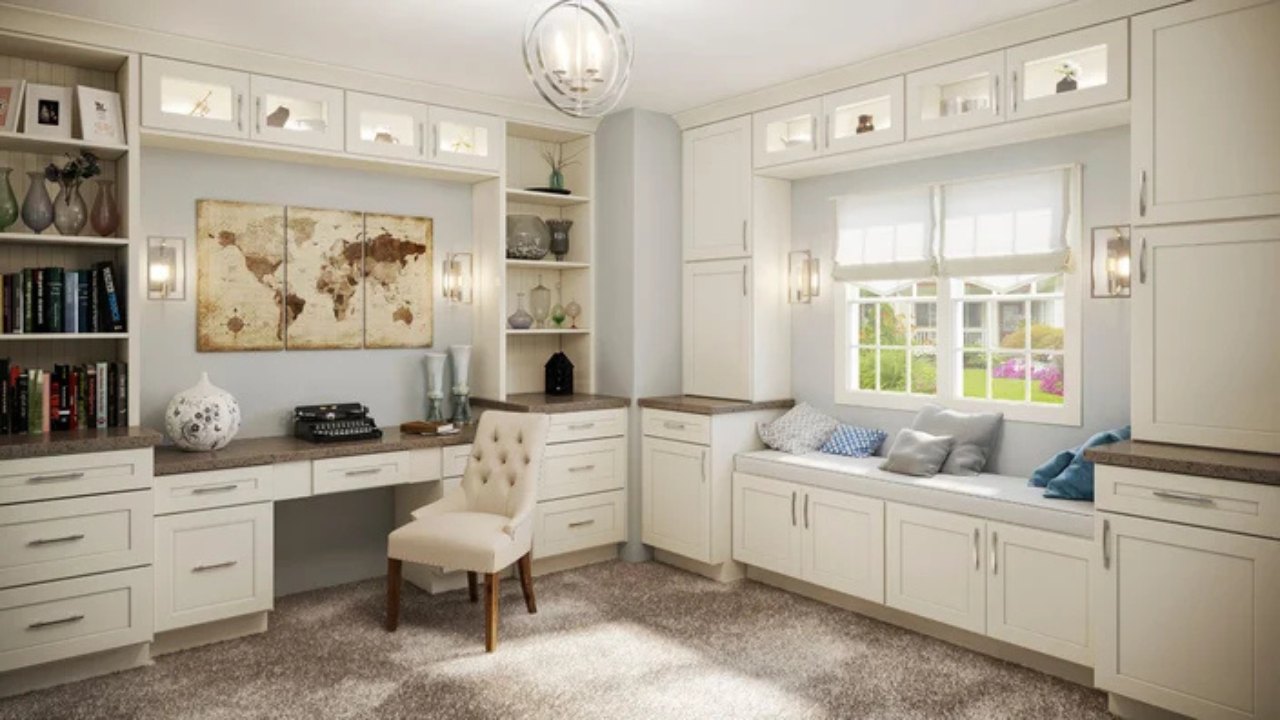
Trusted RTA Brands to Know
If you prefer RTA between IKEA vs RTA Cabinets, then here are the RTA cabinet brands that you need to know.
Fabuwood:
This brand is popular for strong plywood boxes, dovetail construction, and stylish Fabuwood Shaker doors.
J&K Cabinetry:
This RTA brand offers value for pricing with solid wood doors and plywood bodies, which appeals to project managers.
Forevermark Cabinetry:
Forevermark brand balances affordability and design variety. It is widely available through distributors.
Holiday Kitchens:
This brand offers a range of modern and transitional styles with reasonable pricing.
These brands are popular for providing RTA cabinetry with a diverse range of designs and quality. Some rival semi-custom lines in quality, while others remain best suited for budget-conscious remodels.
IKEA vs RTA: Which Is Right for You?
When choosing the right option between IKEA Kitchen Cabinets vs RTA Kitchen Cabinets, things can be overwhelming. Just make sure to choose according to your preference:
- Choose IKEA kitchen cabinets if you prefer reliability, a long warranty, and a modern look. IKEA is popular for kitchens that fit its modular grid.
- Choose ready-to-assemble kitchen cabinets (RTA) if you want plywood durability with more traditional designs, or if you want custom sizes that IKEA cannot accommodate.
At Tivoli Kitchen and Bathroom Style, we often recommend mixing types of cabinet designs and styles. IKEA cabinets offer consistent modules in modern kitchens, while RTA brands for projects demanding flexibility or traditional character.
According to our experience, RTA cabinets offer value for money with customisation, solid wood build, and premium quality hardware as base features. If a slightly higher upfront cost is not a problem, then RTA cabinets are a great investment.
FAQs About IKEA vs RTA Cabinets
Let’s answer your question about IKEA and RTA cabinets.
Are IKEA cabinets good quality compared to RTA?
IKEA cabinets offer reliable quality for the price for a modern kitchen, but some RTA cabinets can provide more durability and quality.
How long do IKEA cabinets last vs RTA?
10–15 years with proper care. RTA cabinets, particularly plywood-based ones like Fabuwood, can last 15–25 years.
Which is more customizable between IKEA vs RTA cabinets?
RTA cabinets provide more size and style options compared to IKEA is more limited to modular, modern layouts.
Do contractors prefer IKEA or RTA cabinets?
Contractors often lean toward RTA because of solid builds and better fit flexibility. IKEA is popular among DIY homeowners for its accessibility.
Which brands of RTA cabinets are best in 2025?
Fabuwood, J&K Cabinetry, and Forevermark remain leading names for kitchen cabinetry. These brands balance cost, durability, and design choice.
Bottom Line
Selecting between IKEA vs RTA Cabinets is a big deal. Both cabinet types offer it’s own functionality, styles, and look. However, not all cabinets are suited to every user. If you value accessibility, modern look, and affordability, the IKEA cabinets are a great choice, but RTA cabinets offer better durability and performance. Choose what suits your requirements.
For more information, you can consult Tivoli Kitchen and Bathroom Design to get better design and cabinet ideas. Consult them to learn about RTA Kitchen Cabinets or IKEA Kitchen Cabinets.

